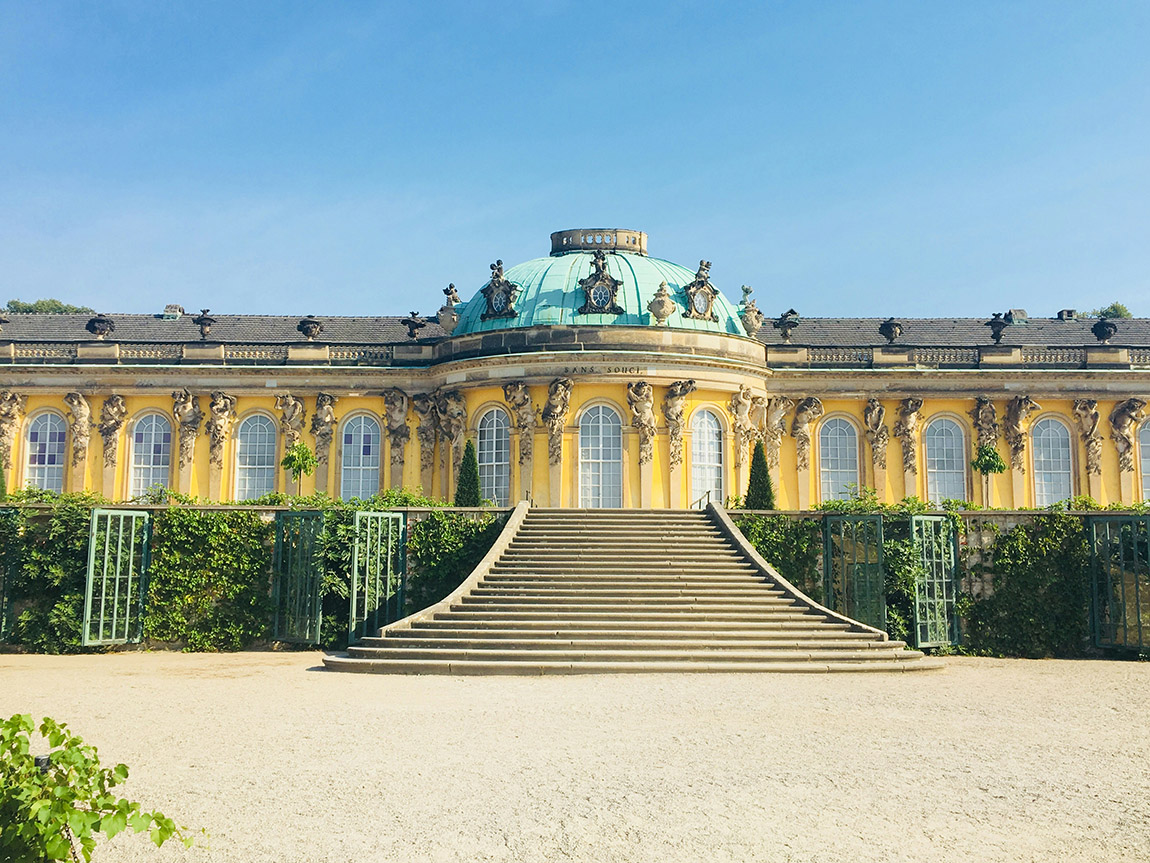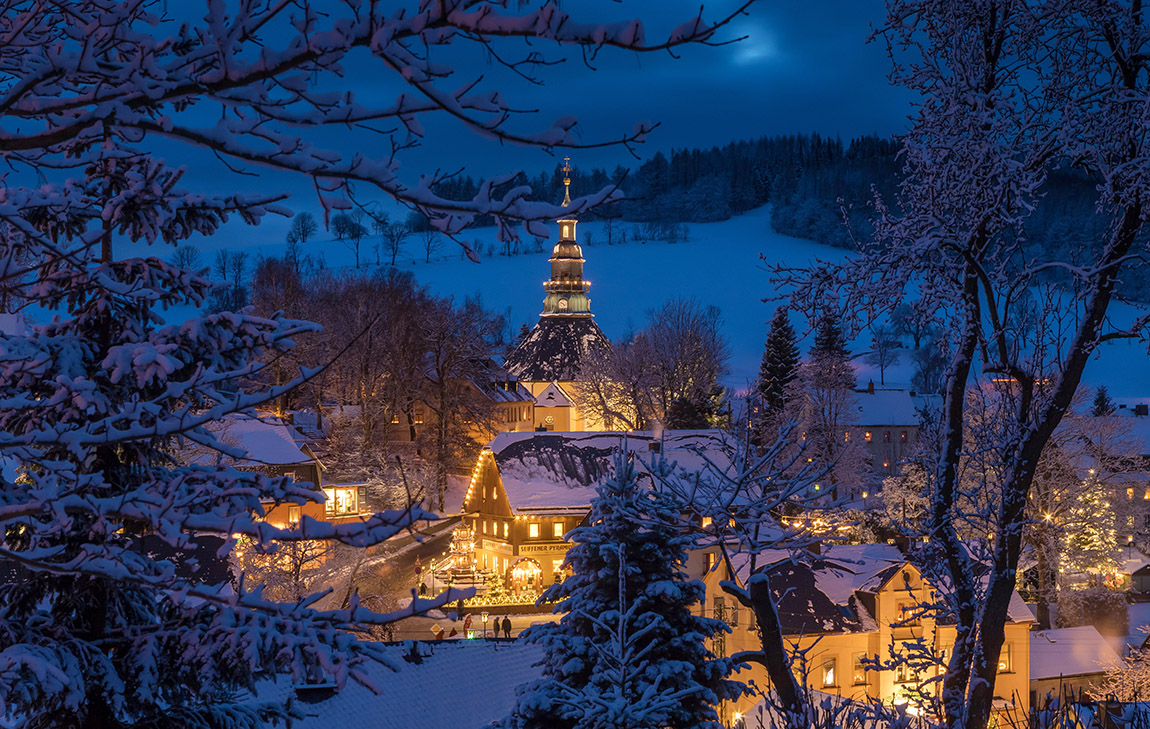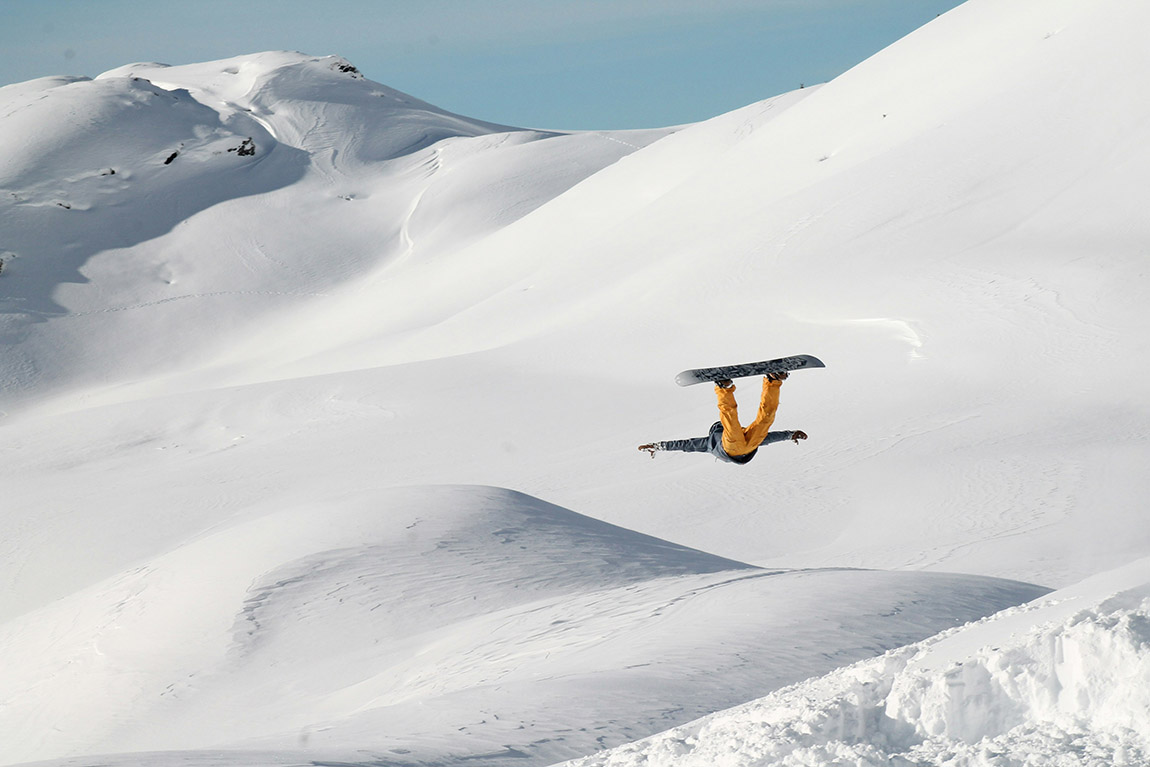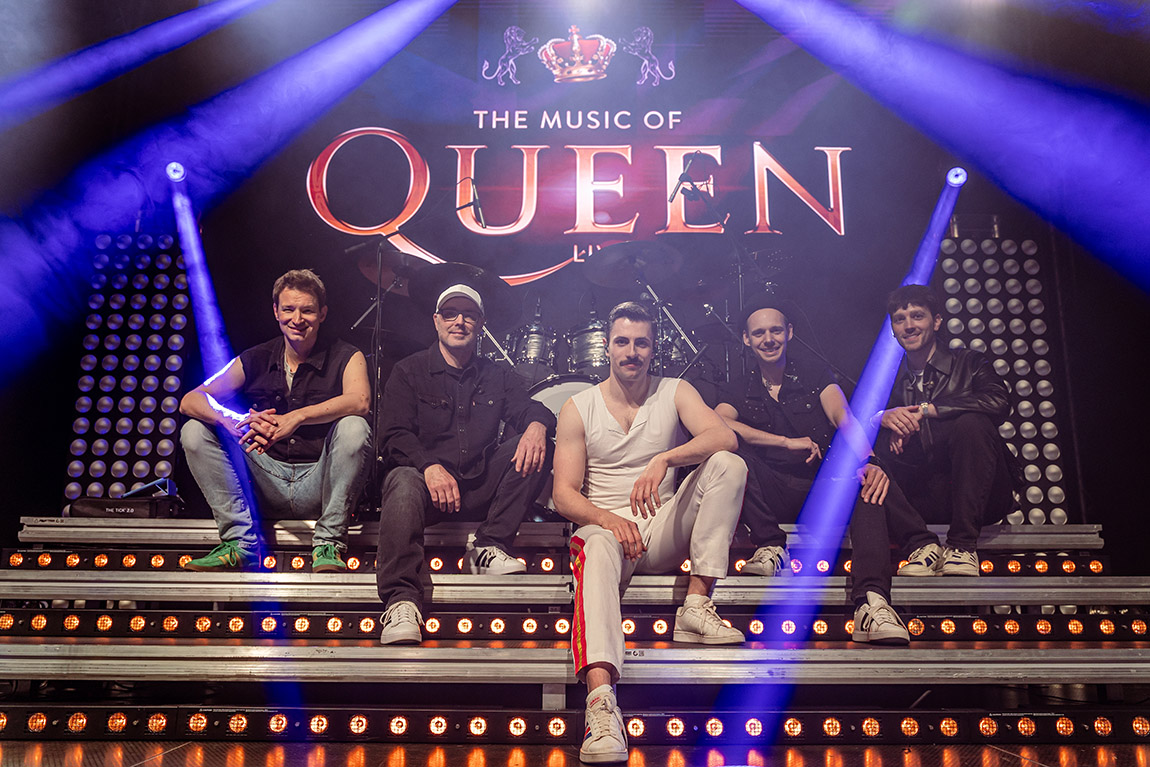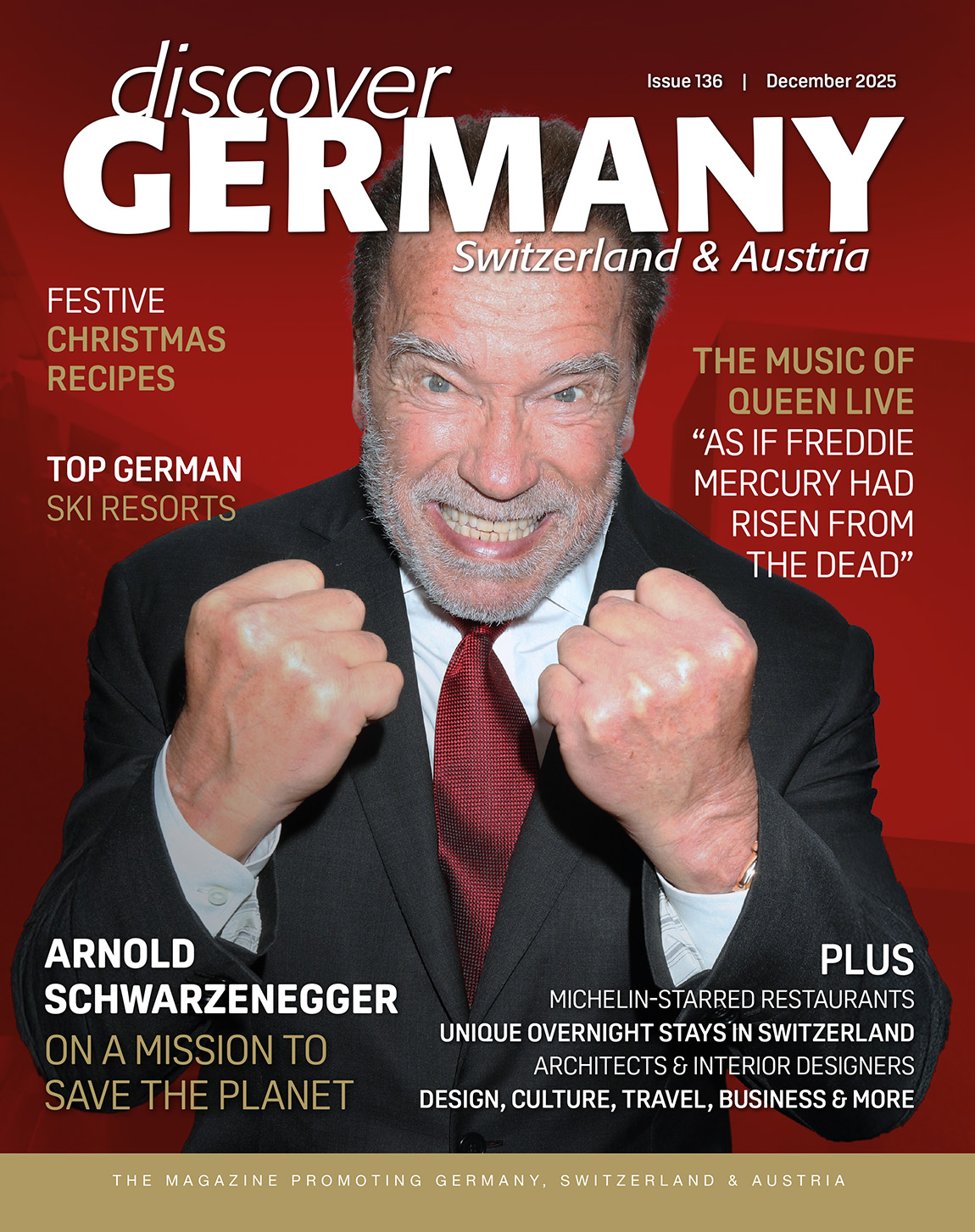Pack your swimwear – island hopping on the North Frisian Islands
TEXT: NORBERT EISELE-HEIN, TRANSLATION: NANE STEINHOFF I PHOTOS: NORBERT EISELE-HEIN
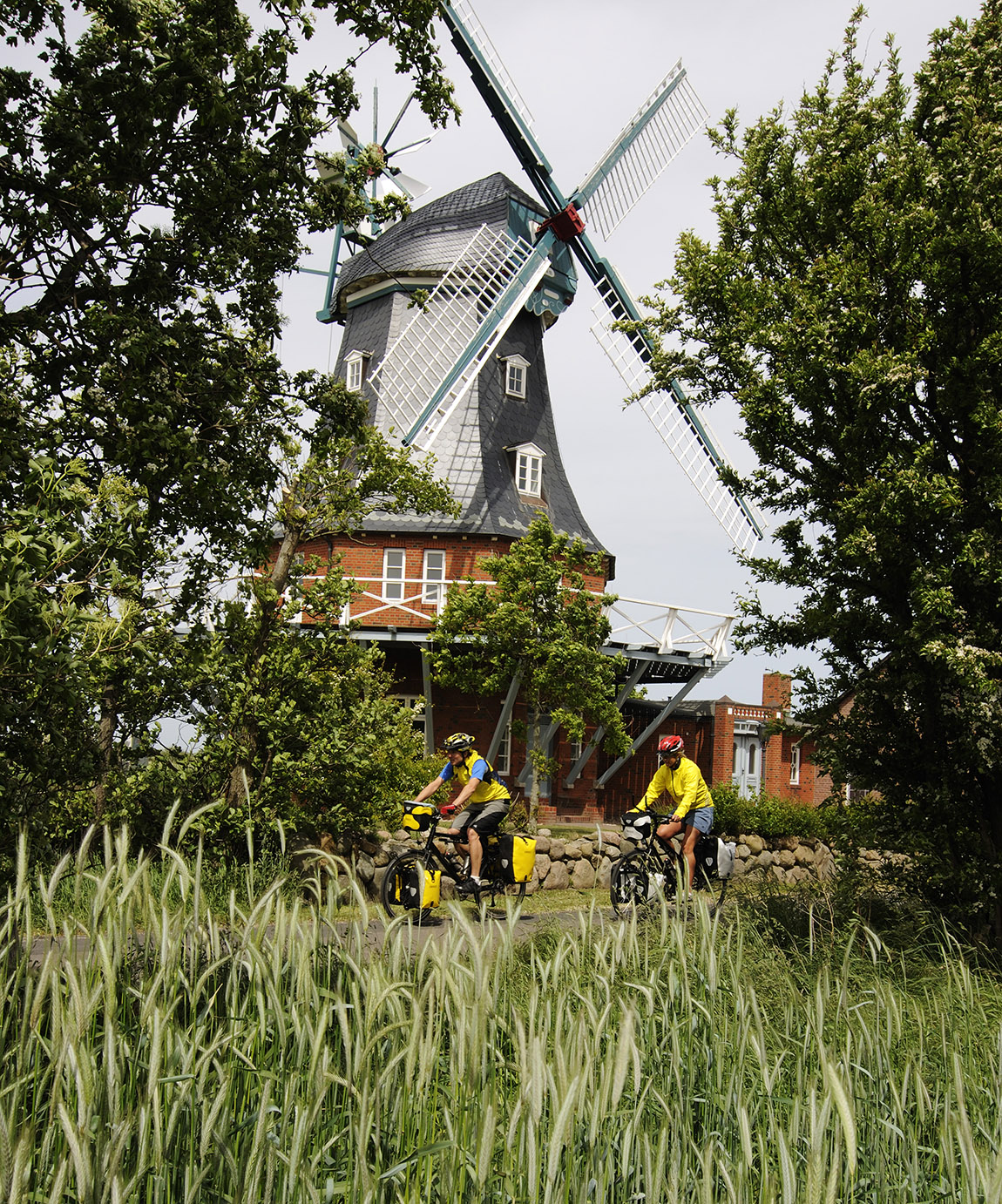
Between the dunes and the dike, the landscape is wonderfully flat, and swimming stops as well as spectacular views await around every corner: The North Sea is the perfect destination for a bike tour. Travel along the North Sea Cycle Route with travel writer Norbert Eisele-Hein from Friedrichsstadt, via the islands of Pellworm, Föhr, Amrum, and Sylt.
When I was still at school, I remember a student living on our street. He always had a surfboard on his VW Beetle and this weird sticker on the tailgate. It looked like a blob. At some point, I finally picked up the courage to ask what it was. “Boy, that’s my home – the island of Sylt,” he explained to me, beaming. Later, when we were about to embark on our first Interrail trips, we even considered a trip to northern Germany. “Nope, if we’re going to drive 1,000 kilometres, then we should go south! The beaches are so much better there,” my friends said back then… What a misjudgement.
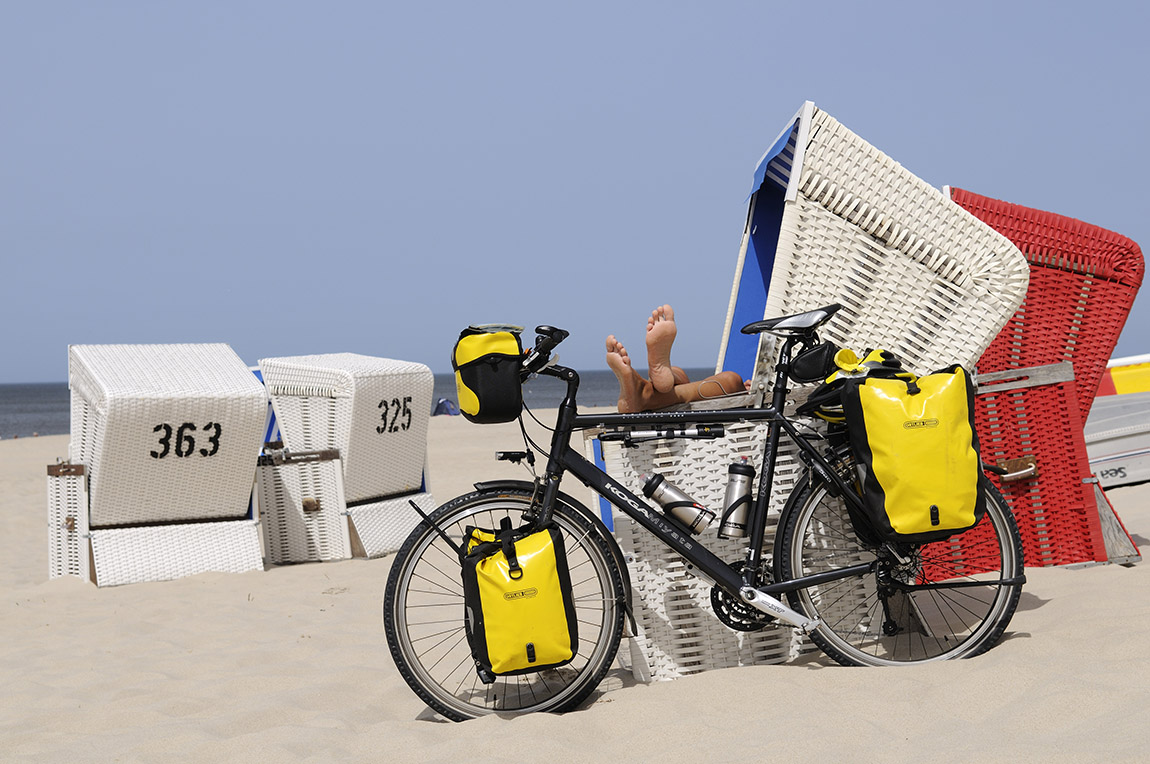
Friedrichstadt – with a few short whistles, the fully automatic doors of the regional train release us into a bright morning. We’d actually wanted to get going right away after the long train ride, but that would be a sin. “Because Friedrichstadt is a total work of art,” confirms our city guide, Heinrich Carstensen. “It was the Dutch who founded our little town here at the confluence of the Eider and Treene rivers in 1621. More precisely, they were Remonstrants, whose interpretation of Protestantism was banned in the Netherlands. Under Frederick III, religious freedom prevailed, which also attracted other religious communities: Mennonites, Danish Lutherans, Jews, Quakers, Mormons… They all thanked the tolerant ruler by building a flourishing trading community. The patrician houses with their ornate stepped gables, the many playful arched bridges over the canals, and, of course, the countless church steeples, are still testament to this today,” he reveals. He suggests we take a boat trip on the canals through this small replica of Amsterdam… but we simply cannot wait to embark on our journey.
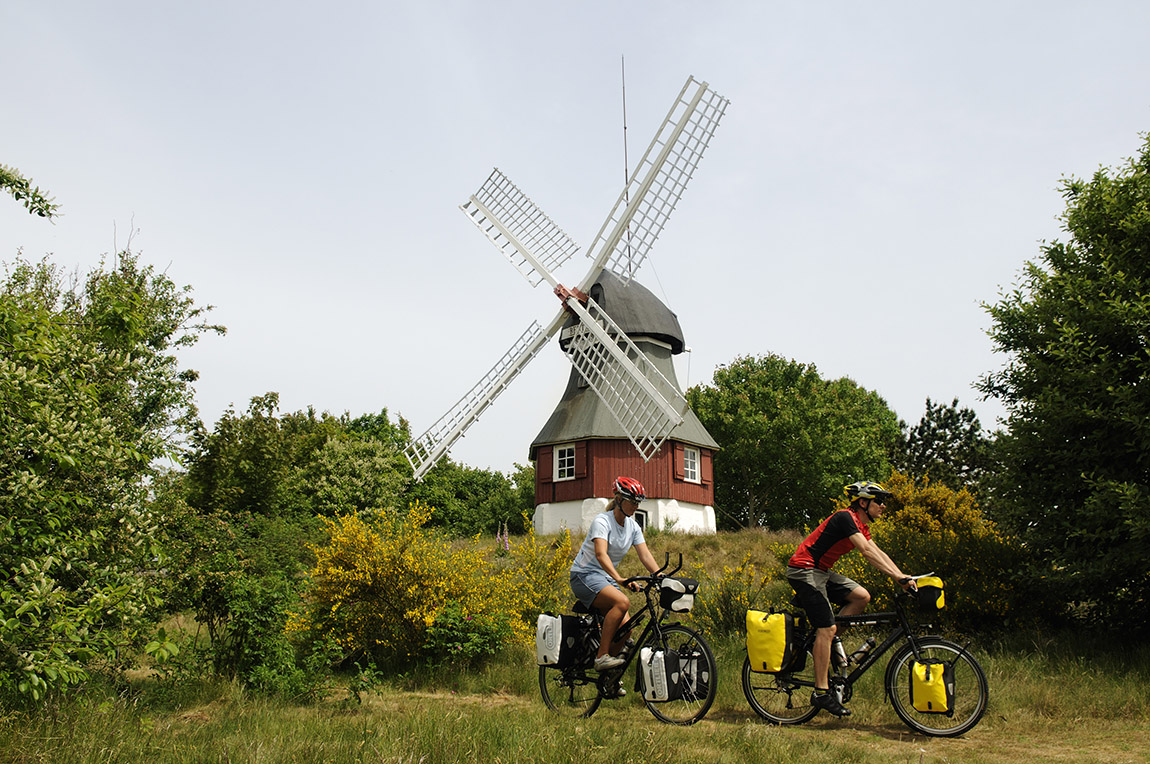
So, we pedal off towards the Eiderstedt peninsula. In Witzwort, we meet a group of craftsmen on their journeyman years – a tradition that sees craftsmen that have finished their apprenticeships go travelling for a few years. They’re seeing off a fellow traveller heading out into the wide world. They bury a bottle of rum and a few bottles of beer not far from the town sign, so the journeyman won’t go thirsty on his return. Just a few kilometres further, near Uelvesbüll, we turn onto the North Sea Cycle Route. This route runs over 6,000 kilometres through seven North Sea countries, making it the longest signposted cycle route in the world. We used it as the basis for our tour to the North Frisian Islands. In Husum, we see the North Sea for the first time. A bustling harbour, magnificently restored town houses – Husum, too, deserves a long break. Especially since the colourful restaurant boats offer rolls with freshly peeled crabs, Labskaus (a speciality from northern Germany), and all kinds of fish specialties. While you’re there, listen to the old Frisians chatting in Low German.
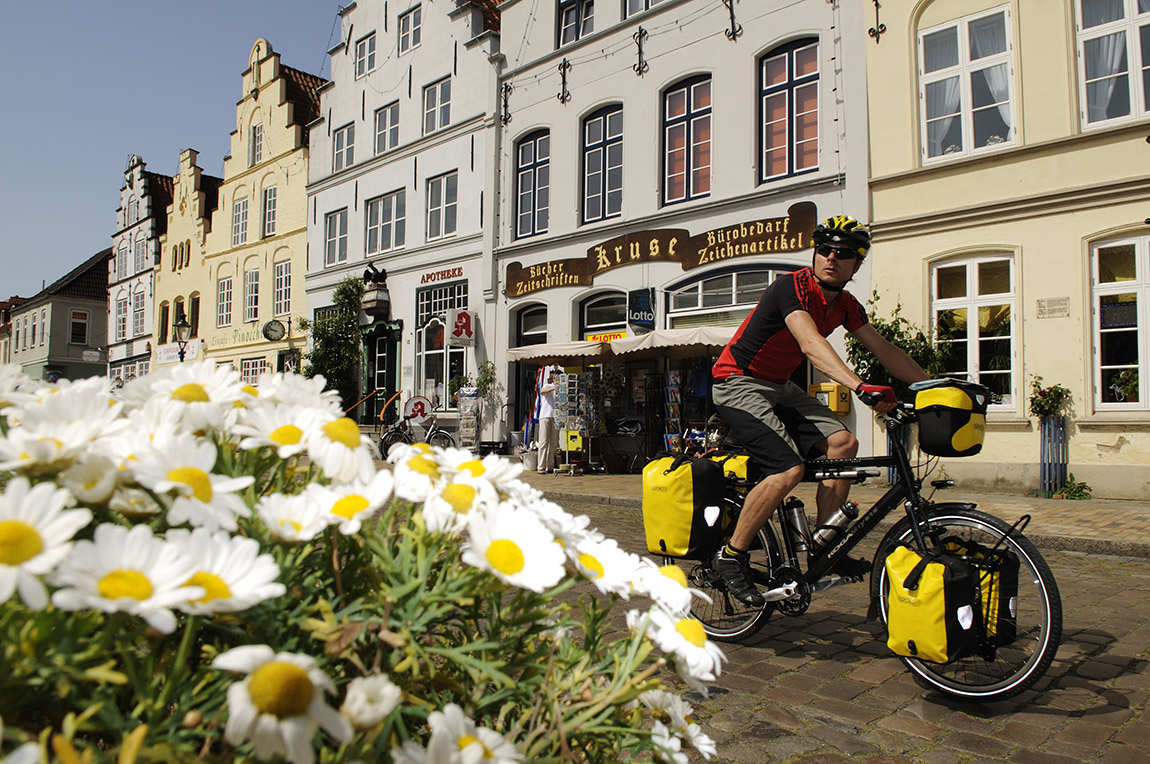
But we can’t miss the last ferry to Pellworm. Via Süderhafen, we conquer the Nordstrand peninsula. It sounds confusing, but as long as we follow the blue North Sea Cycle Route signs, we can’t go wrong. Pellworm was cut off from Nordstrand during the flood disaster of 12 October in 1634, the so-called ‘groten Manndränke’. The waterway between them is treacherously shallow. Only a 2.5-kilometre-long deep jetty allows the ferry service to be maintained regardless of the tide. 500 rental bikes, 80 kilometres of quiet roads, three churches, and one police officer – there’s no doubt about it, the island is a cyclist’s paradise. “Our main attraction is the lighthouse on the southern tip,” explains Ms. Koch from the tourist information office. “Until 2014, our captain, Wilfried Eberhardt, escorted over 300 couples into marriage every year. Sometimes he had to officiate up to four weddings a day. This tiny registry office in our lighthouse was once one of the busiest in the country and is still frequently booked by wedding parties today,” she says proudly.

Back on the mainland, the course is a hard north. If the wind blows too strongly from the west, we deviate from the top of the dike and ride in the lee of the bulwark. At the Beltringharder Koog, however, this alternative is out of the question for quite some time. At the Kögen ¬– huge reservoirs on the landward side of the dike – the North Sea laps on both sides of the narrow ridge. The cycle path seems to cut its way straight through the open sea and disappears into the horizon – depending on the wind, a sublime or queasy feeling in the pit of the stomach.
At Hamburger Hallig, we turn briefly west. The Hallig islands are a unique natural phenomenon, considered relics of the mainland. The farms stand on slightly raised hills, called warfts, and are protected from the tide by summer dikes. During storms, the dikes are regularly flooded, although new land is also washed ashore. Visually, the farms then appear to float directly on the sea. A constantly threatened everyday life in the rhythm of the tides. Incidentally, Hamburger Hallig is the only one accessible by bike. The asphalt rolls back down smoothly, but the route veers slightly westward, the wind slightly northerly. A fierce mix. Just a moment ago, we were flying over the dike, but now we’re cycling to Dagebüll like we’re hitting a wall. A glance at the dike sheep eases the Sisyphean hamster wheel. When they stand with their noses in the wind, they look almost stocky or like a guy with gelled hair. If it blows from behind, they look like a punk with a mohawk or an exploded cotton ball. We manage to reach the ferry in Dagebüll to Wyk on the island of Föhr just in time.
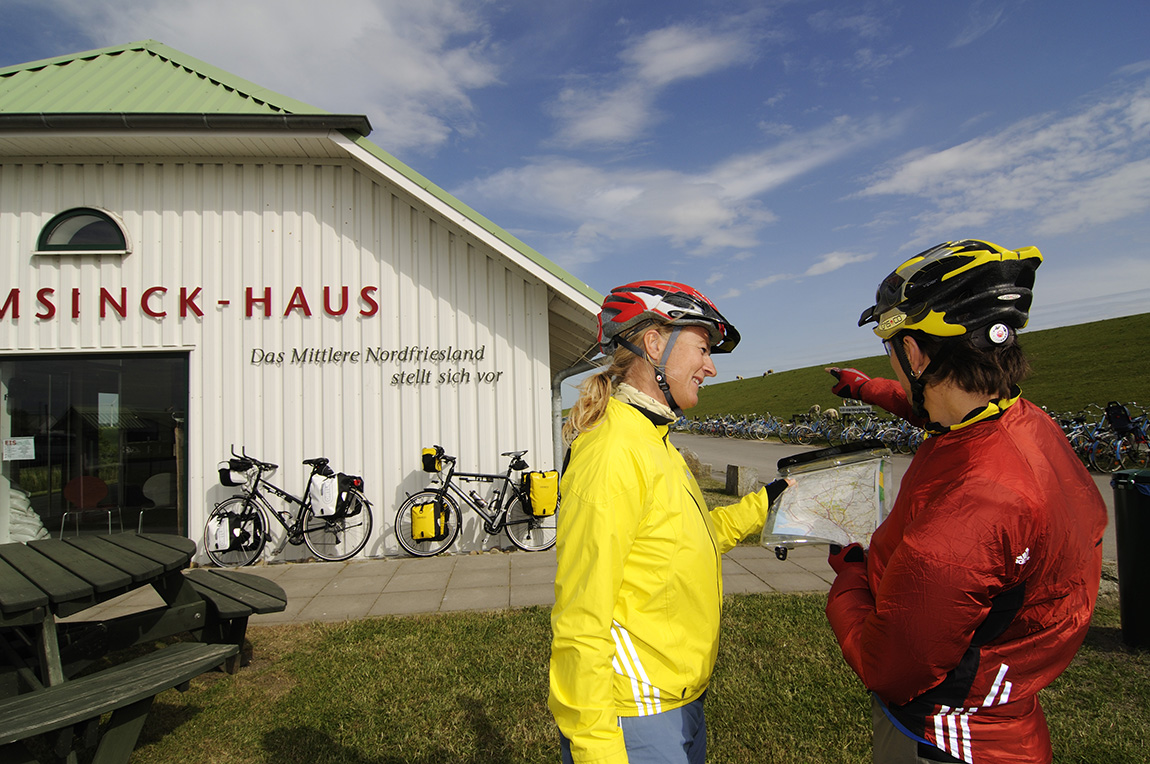
Radfahrer am Amsinck-Haus bei der Hamburger Hallig, Nordfriesland, Nordsee, Schleswig-Holstein, Deutschland, MR
Boldixum, Wrixum, Midlum – Föhr’s illustrious village names inevitably bring to mind Asterix and Obelix. And Nieblum, on top of that, looks like a small, unyielding, Gallic village: brick buildings with thatched roofs, blooming geraniums in the windows, everything stylishly decorated. Tourism is booming – but that wasn’t always the case. In the 17th and 18th centuries, the people of Föhr lived primarily from whaling. In spring, the seaworthy men, including boys as young as 12, went to Greenland to hunt whales, only returning in fall. Our long island tour also passes the Church of St. Laurentii. There, in the cemetery, the inscriptions on the gravestones still bear witness to these hard times. Particularly fascinating is the epitaph of Lucky Mathias. He managed to kill 373 whales in 50 Greenland summers, thus generating considerable wealth. Back then, he was a hero; today, he’d be in big trouble with conservationists. After a good 20 kilometres, the cycle route passes Stelly’s Hüüs (a former Friesian cottage), a museum-worthy former farmhouse that has been converted into a cosy café. Here, homemade cakes and Frisian tea with rock candy are legendary.

Back in the south, we head straight for the beach at the Kedewun lighthouse. Firm, white sand. No crowds à la Rimini. It’s time to take off our cycling shoes and jump into the waves. The water is a bit chilly, but clean. The North Frisian Islands are all part of Schleswig-Holstein Wadden Sea National Park, which also ensures water quality. Afterwards, we lounge in our typical beach chairs, sheltered from the wind and let the salt dry on our skin. A serious storm blows up during the night. When we hop into the saddle the next morning, some miniature sand dunes have actually formed in Wyk’s pedestrian zone.

Next stop ¬– Amrum. From afar, we can see the enormous lighthouse of Großdün, clad in its red and white striped sweater. Majestically sailing seagulls guide us. A few playful seals even appear in the harbour of Wittdün. Mudflats, forest, heath, dunes… Amrum absolutely demands a double loop from cyclists. On the cycle path, we wind through the picturesque hamlets of Süddorf and Nebel. Every view is a postcard. Beautiful Frisian houses with hipped thatched roofs, small lattice windows, and arched doors. Up to Norddorf and then back along the Sea Path. This equally excellently signposted cycle path has some rough and slippery sections. Concentration is required – don’t get completely lost in the endless panorama of the Wadden Sea. Turn around in Wittdün and cycle up again on the Forest Path. Deep, shady forest with the spicy scent of heather and giant pines – is this still the same island? In between, narrow paths repeatedly lead to the 15-kilometre-long, and in some places over a kilometre wide, secluded, dream beach. This is swimming and biking perfection.
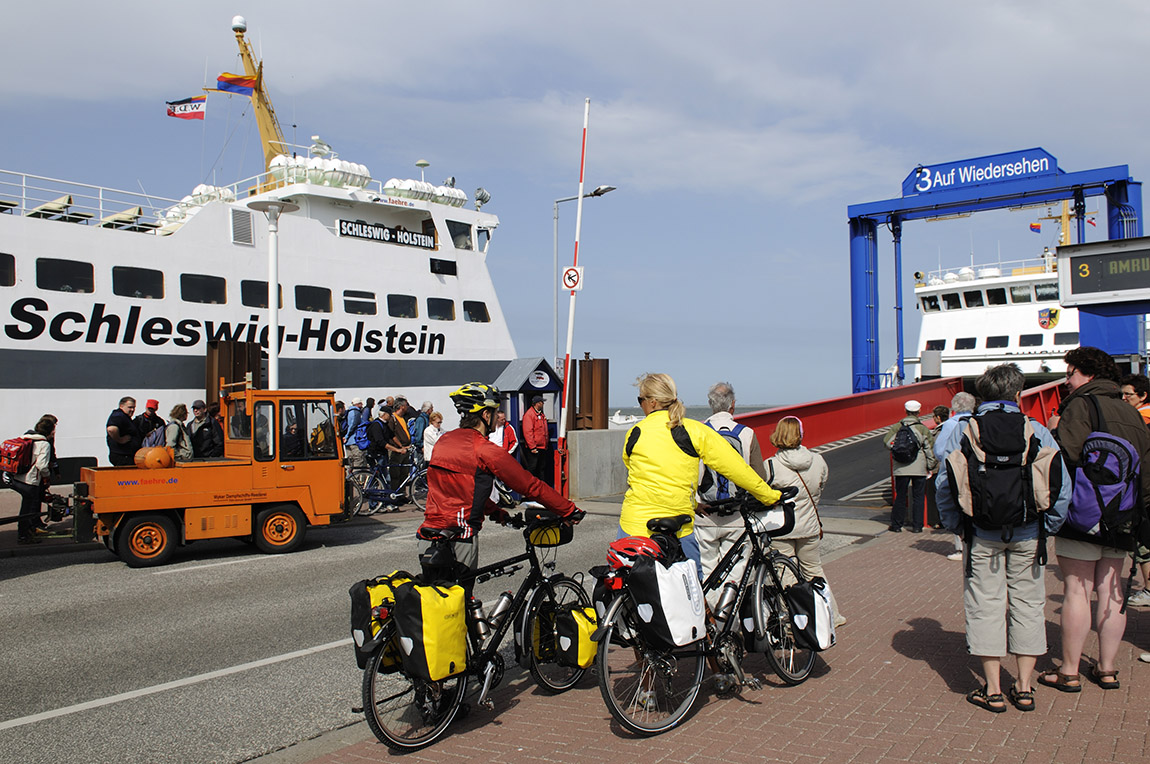
The Adler Express takes us full speed along Kniepsand, Amrum’s truly paradisiacal beach belt, and gives us breathtaking views of the steep cliffs and playful dunes before spitting us out again in Hörnum on Sylt – the island that my childhood neighbour mentioned all those years ago. It looks almost Caribbean, only the palm trees are missing. Sylt’s idiosyncratic blob-shaped island offers over 40 kilometres of fine sandy beach on its west side – some of it godforsaken. Near Rantum, two crossed sabers flutter in the wind on a black flag. That’s the trademark of Herbert Seckler’s cult restaurant Sansibar. Celebrity watching and Prosecco on the wooden deck? No, we keep cruising. We’d rather treat ourselves to a beer later. With our butts in the dune sand. After the tour, of course. We leave bustling Westerland behind. In Wenningstedt, we enjoy delicious fish sandwiches and an enormous panoramic view at Gosch, right on the cliff. On the horizon, a shrimp boat bobs into view with its far-reaching nets. It’s like something out of a commercial. Red Cliff, the Uwe Dune, a quick dip in the waves again. Süderheide, List, and off to Ellenbogen, the northernmost point of our tour. Blue skies, 25 degrees, and above all, no wind – with every turn, we fall more in love with Sylt. But then a private broadcaster ruins our parade: “Stop – no chance,” says the security guard! “The entire area has been rented for a series,” he says, friendly but firm. Of all things, we are denied access to the last lighthouse, List-Ost.
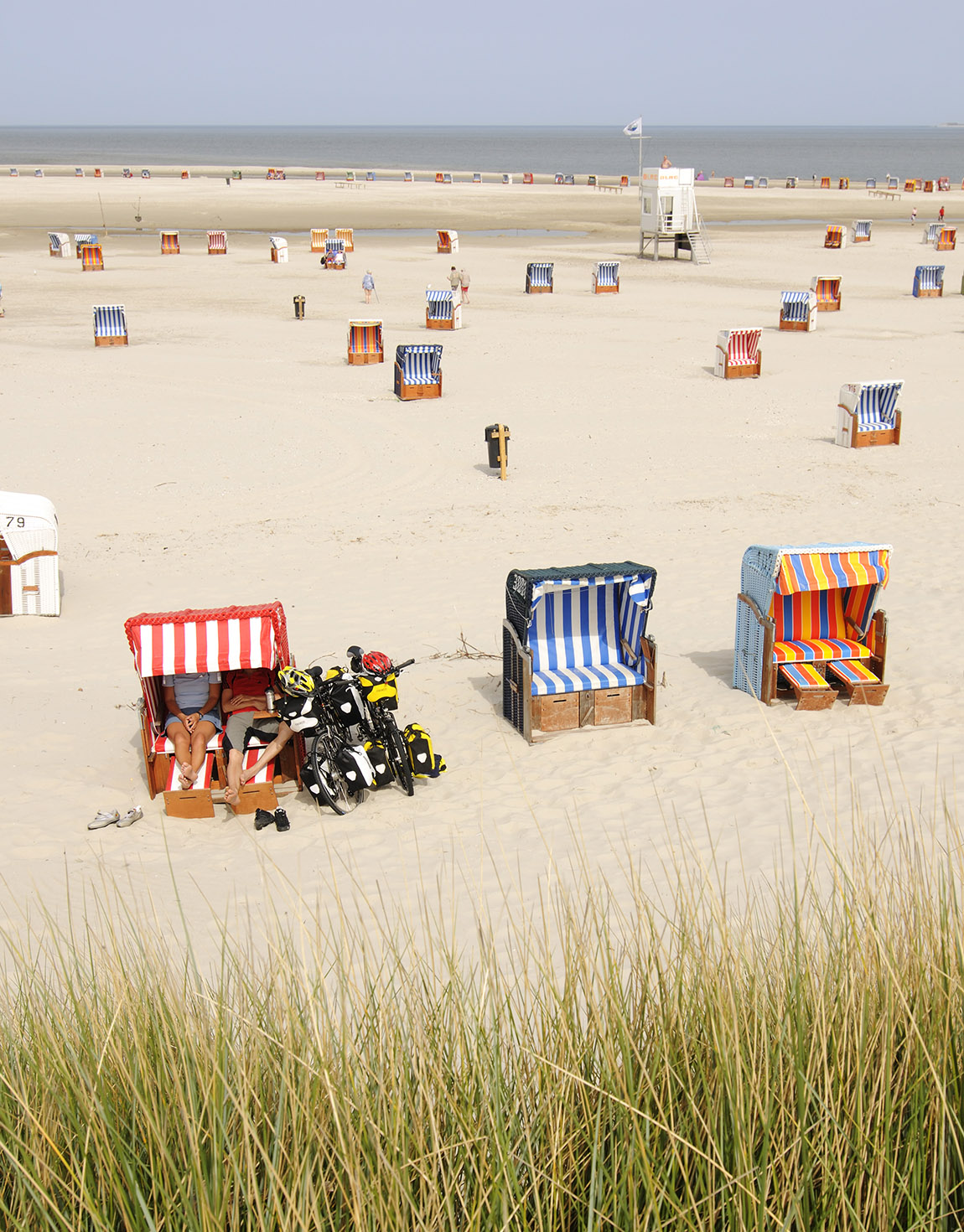
We don’t mind as it’s late anyway and we decide to head back instead. The deserted dune landscape flies by, heather adding a pleasant boost to our oxygen shower. A little later, we pass the Whisky Mile in Kampen – a collection of chic bars and celebrity clubs. The density of Porsches increases dramatically. Sylt really can do both: currywurst at a kiosk and oysters with Champagne.
The next morning, the bikes disappear into the carriage. The train rattles back to the mainland over Hindenburgdamm. The mood is slightly dejected. One last look at the peculiar blob in the North Sea… of course, we all have that strange sticker in our panniers – so it won’t hurt quite so much.

MORE INFORMATION
www.nordseekuestenradweg.de
www.nordseetourismus.de
www.friedrichstadt.de
www.husum-tourismus.de
www.nordstrand.de
www.pellworm.de
www.foehr.de
www.amrum.de
www.sylt.de
BIKING TRAIL
An easy bike ride for everyone – the route runs entirely on paved roads from south to north, is excellently marked, and largely avoids traffic. The wind almost always comes from the west, and the only elevation gain is on the ramps up the dikes. Leisurely cycling at its finest, perfectly combined with the train. Don't forget your swimming trunks!
ACCOMMODATION
Friedrichstadt: www.hotel-aquarium.de
Pellworm: www.leuchtfeuer-pellworm.de
Wyk auf Föhr: www.feringhues-wrixum.de/buchung-kontakt
Amrum: www.seeblicker.de
Sylt: www.tui-blue.com
OTHER USEFUL LINKS
www.jugendherberge.de
www.bettundbike.de
Subscribe to Our Newsletter
Receive our monthly newsletter by email


